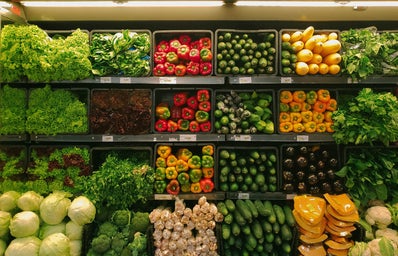Most grocery stores have almost everything you could possibly need or want to eat. There are blueberries in January and you can even buy pumpkins in July. The terms of what items are “in season” are loosely known, but are generally not at all adhered to. However, the average consumer should start paying attention to these tidbits of produce information.
Eating foods that are in season has a wide variety of benefits. For one, the food you purchase in season is often more fresh. It has likely travelled less than the average 1500 miles from its place of harvest to your mouth. This also means that you are directly supporting local farmers in the area, reducing carbon emissions, and helping the environment. Another plus is that shopping in season is a little more forgiving on your wallet. In season shopping is typically less expensive simply because it is less energy exhaustive and there is less travel time. Lastly, the nutritional value of food depreciates over time. Therefore one of the most noteworthy aspects of eating in-season produce is that it is more nutritious. Farmers are picking produce closer to the time in which you are actually going to eat the food, which makes it healthier and more nutrient-dense.
As always, this discovery brings up the important “how to” question. One of the best ways to purchase local produce is to see if there are any CSA (Community-Supported Agriculture) box programs near you. Nowadays, these boxes are often delivered and come fully stocked with fresh produce that is ready for consumption. Though these programs generally come with a hefty initial price tag, on average, it is actually less expensive to subscribe to these initiatives than it is to shop at a grocery store for a (often less nutritious) counterpart. Another great way to get local agriculture and support local farmers is to go to the nearest farmer’s market. Though we are heading into winter and outdoor markets are taking down their tents for the winter time, there are still plenty of opportunities at indoor farmers markets to buy local goods.
Speaking of winter time, this season is often not associated with growth, but rather dark skies and snowy grounds. However, there are still plenty of crops that can actually grow and be harvested during the winter time, which is incredible; Mother Earth never ceases to amaze. Some of the winter time food choices include: brussels sprouts, beets, pears, a variety of squashes, sweet potatoes, turnips, and a variety of other options.
So the next time you are grocery shopping, consider shopping alongside the seasons. Your bank account will thank you, your body will thank you, and the Earth will thank you!


